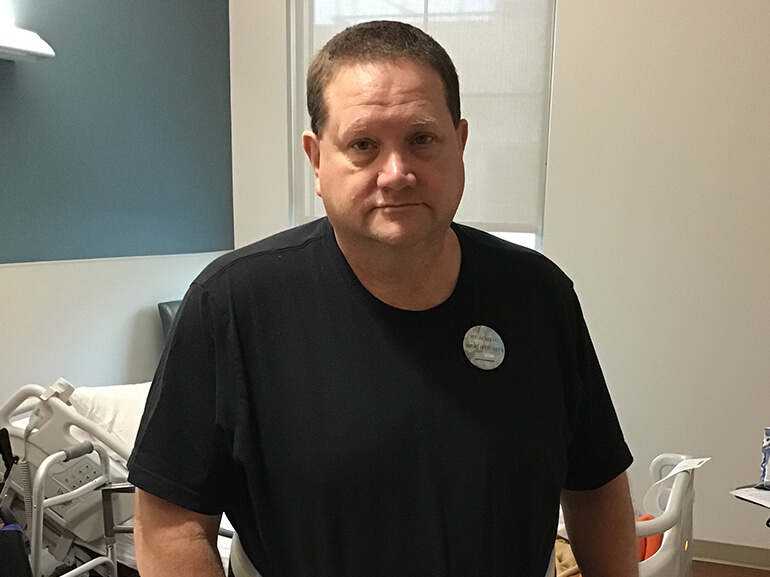Floyd’s Story

Floyd Marr is a 49-year-old manager at Napa Auto Parts residing in Slidell, LA. He and his wife, Amy, are the proud parents of two sets of twins, 22-year-olds Phillip and Rebecca and 9-year-olds Casey and Camille.
On a late February day, Floyd began to experience dizziness, vomiting and weakness. He attributed it to a virus that had been going around his workplace, and continued to go about his normal activities. About a week later, things got worse when he noticed decreased coordination, loss of balance and left-sided numbness. After his oldest daughter noticed he was unable to stand, she took him to Slidell Memorial Hospital. An MRI revealed he had suffered a stroke.
Prior to his stroke, Floyd enjoyed an active lifestyle, including working on home projects and taking his two youngest daughters to dance class. Following his stroke, Floyd suffered from poor coordination, impaired balance, difficulty walking, weakness and decreased independence with self-care tasks. Determined to return to his normal level of function, Floyd and Amy, who is a nurse, chose Northshore Rehabilitation Hospital for his rehabilitation journey.
In physical therapy sessions, Floyd focused on walking, slowly increasing his distance from 100 to 500 feet. He also practiced climbing stairs, walking on uneven terrain, side stepping, lateral and backwards walking and transferring from the floor to a mat. Exercises included using the leg stepper, arm bike and balancing activities.
Occupational therapists helped Floyd improve the use of his hands, wrists and fingers by using a hand exerciser that uses resistive bands for grasping, clothespins for pinching and therapy putty for strength. He also performed exercises to increase strength in his larger muscles, including using a rounded arc structure and moving discs from one side to the other, lifting small weights in seated and standing positions, throwing/catching balls and performing modified pushups. As Floyd’s strength increased, so did his independence in self-care activities such as dressing and showering.
Floyd recalls the first major milestone in his recovery occurred when he began walking in the hospital hallways with no assistance other than the wall handrails. “It was a slow process, but I saw a lot of improvement since arriving,” said Floyd.
Floyd’s family was very supportive during his recovery. His wife visited daily, and participated in education and family training sessions with him. His brother also visited from Mississippi, and he was able to FaceTime with his kids every day.
After two weeks at Northshore Rehabilitation Hospital, Floyd was ready to return home, walking and performing his self-care tasks with independence. He was most looking forward to a home cooked meal and quality time with his family. He was also grateful to be able to attend his daughter’s engagement party and was determined to be completely recovered and walk her down the aisle at her wedding.
This journey has made Floyd realize that he’s not invincible like he once may have thought, and he will now need to learn to rely on other people – and that’s OK. He plans to continue outpatient therapy upon discharge to keep getting stronger.
When asked what insight he had to share with others on a similar journey, Floyd said, “Follow the therapists’ lead and try to do everything they tell you to do. That’s the only way you’re going to work through it and get better.”